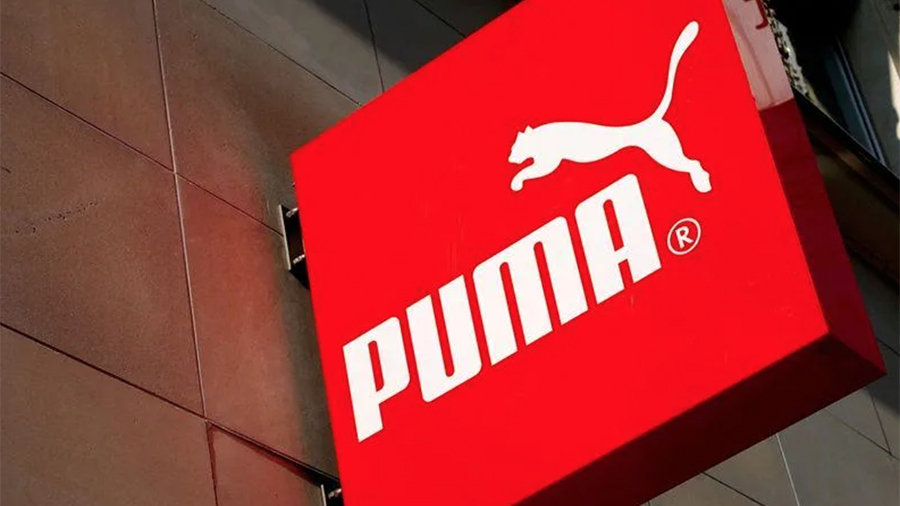With sales running up 14 percent on a currency-neutral basis in the fourth quarter, Puma recorded record sales and operating profit levels in 2021. For 2022, Puma expects sales growth of “at least ten percent” as strong demand in most countries offsets continuing challenges in China.
Results for the fourth quarter were in line with a forecast provided on January 20.
On a media call, Bjørn Gulden, Puma’s CEO, said: “Our continued brand momentum combined with high operational flexibility are the main reasons for these achievements. Our strategy of working closely together with our suppliers and retail partners to maneuver through all the short-term issues and obstacles without hindering our mid-term momentum paid off.”
Looking ahead, Gulden said the pandemic continues to impact the supply chain, inflationary pressures are having a negative impact on costs and operating margins, and the geopolitical situation “remains very tense.”
Gulden added, “We will have to continue our hard work in this difficult environment, but I remain very optimistic for the future of both our sector in general and Puma in particular. Our continued brand momentum, strong demand for our products and very good feedback from our retail partners make me very optimistic.”
In the quarter ended December 31, sales increased 14.3 percent currency-adjusted (currency-neutral) to €1,767.1 million (up 16.2 percent reported).
By region, sales were led by the Americas, which achieved sales growth of 31.3 percent (currency-neutral) to €727.3 million, driven by continued high demand for the Puma brand in the North American and Latin American markets.
EMEA’s grew 14.9 percent (currency-neutral) to €573.3 million, driven by growth in Europe and emerging markets, including Russia, South Africa, and Turkey. Sales in the Asia/Pacific declined 5.4 percent (currency-neutral) to €466.5 million, due to the current market environment in Greater China resulting from COVID-19-related restrictions and geopolitical tensions, while almost all other markets in Asia/Pacific reported double-digit growth rates. Puma’s fourth-quarter sales fell 27 percent in China while rising in the rest of Asia/Pacific.
By product category, Footwear climbed 15.6 percent (currency-neutral) to €755.0 million. Apparel advanced 11.7 percent (currency-neutral) to €727.3 million and Accessories gained 17.4 percent (currency-neutral), to €284.7 million. The balanced growth across all product divisions was driven by demand for Performance categories, predominantly Running and Training, Teamsports, Golf, and Basketball, as well as for the Sportstyle category. Compared to the fourth quarter of 2019, sales were up by 24.1 percent (currency-neutral).
By channel, Wholesale sales grew 16.5 percent (currency-neutral) to €1,208.1 million and Direct-to-Consumer (DTC) revenues increased 9.7 percent (currency-neutral) to €559.0 million. While sales in owned and operated retail stores increased 21.5 percent (currency-neutral), e-commerce declined 6.8 percent (currency-neutral) which was solely driven by the current market environment in China. In line with its strategy, Puma said it continued to prioritize its wholesale partners when product supply was limited.
Gross margins in the quarter improved 20 basis points to 48.2 percent, driven by better sell-through and less promotional activity, while geographical and channel mix effects, currency and higher freight rates had a negative impact.
Operating expenses (OPEX) increased 18.9 percent to €795.1 million as a result of higher marketing expenses, more retail stores operating and higher sales-related distribution and warehousing costs. As a percent of sales, OPEX increased to 45.0 percent from 44.0 percent a year ago as Puma continued to face operating inefficiencies due to COVID-19, especially in the supply chain.
EBIT (earnings before interest & taxes) increased 2.7 percent to €65.0 million year-over-year and were up 17.8 percent from €55.2 million in the pre-pandemic fourth quarter of 2019.
Net earnings decreased to €7.9 million from €24.7 million in 2020 and €17.8 million in 2019 due to a lower financial result and a negative impact attributable to non-controlling interests.
For the year, sales increased 31.7 percent (currency-neutral) to €6,805.4 million (+30.0 percent reported). The strong sales development was driven by double-digit growth rates in all regions and product divisions. Compared to 2019 levels, the Group sales increased by 29.8 percent (currency-neutral).
By region, the Americas led the growth with a sales increase of 53.9 percent (currency-neutral) to €2,636.9 million, exceeding the €2 billion mark for the first time. In the EMEA region, almost all countries contributed with double-digit increases to a sales growth of 28.2 percent (currency-neutral). Sales in Asia/Pacific region were up 10.6 percent (currency-neutral), as strong growth in markets such as India, Japan and Oceania more than compensated for the current market environment in Greater China.
The Wholesale business was up 35.0 percent (currency-neutral) in 2021 to €5,080.6 million while the DTC sales increased by 22.8 percent (currency-neutral) to €1,724.8 million with growth in owned and operated retail stores (+30.3 percent currency-neutral) and e-commerce (+11.3 percent currency-neutral).
The gross profit margin improved by 90 basis points to 47.9 percent (FY 2020: 47.0 percent/FY 2019: 48.8 percent). This improvement was driven by better sell-through and less promotional activity, while geographical and channel mix effects, currency and higher freight rates had a negative impact. In Footwear, gross profit margin improved from 45.7 percent in 2020 to 47.3 percent in 2021, in Apparel from 48.5 percent to 48.9 percent and in Accessories from 47.0 percent to 47.1 percent respectively.
EBIT increased 166 percent to €557.1 million €209.2 million and gained 26.6 percent from €440.2 million in 2019. The gains reflected the very strong sales growth, higher gross profit margin and continued OPEX control. This represented the highest operating result (EBIT) that Puma has ever achieved. EBIT margin improved to 8.2 percent from 4.0 percent a year ago and 8.0 percent in 2019.
Looking ahead, Gulden said, “The year 2022 has started with an all-time high of COVID-19 cases and, consequently, several governments have implemented regional or country-wide restrictions which affect our entire value chain from manufacturing to retail store operations. Political tensions in key markets, as well as supply chain constraints due to container shortages and port congestion, are also, unfortunately, continuing in the new year. “
To offset the higher raw material and freight costs, Gulden said Puma is gradually raising prices, with the bulk of that to come in the second half of the year.
Gulden also said he expected sales to fall again in China in the first quarter and declined to estimate when growth would return to the region. He noted that Chinese celebrities were still avoiding marketing with Western brands, although athletes were returning. Puma, along with rivals including Nike, Adidas and other Western brands continue to feel the effects of a backlash that began in March 2021 from Chinese state media and e-commerce platforms over historic statements of concern about forced labor in Xinjiang.
Despite the uncertainties lasting into 2022, Puma said it expects a strong currency-neutral sales growth of at least ten percent in the financial year 2022. EBIT is expected to increase between 8 percent and 26 percent to a range of €600 million to €700 million against EBIT of €557 million in 2021.
Gross margins and operating expense ratio are expected to continue to depend highly on the degree and duration of the negative impact of the pandemic on sales. Inflationary pressure from higher freight rates and raw material prices, in addition to the operating inefficiencies due to COVID-19, are expected to have a negative impact on profitability in 2022.
Photo courtesy Puma
















